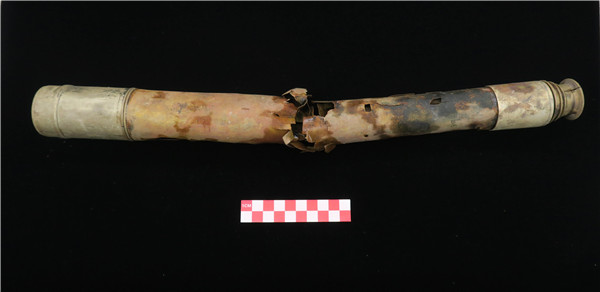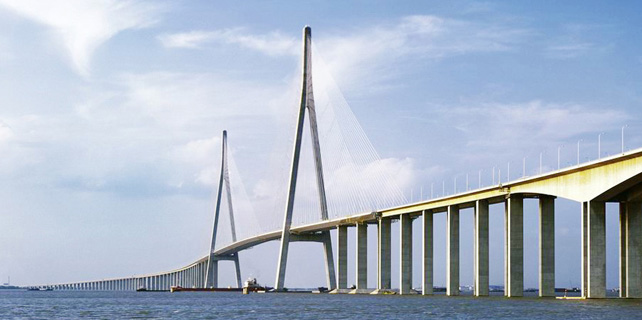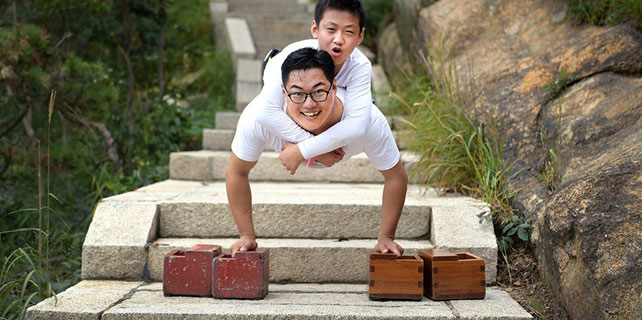Sunken heroes
 |
|
One of the three highlighted discoveries from the shipwreck of Zhiyuan in 2016: a hand-held telescope carved with the name of Chen Jinkui. [Photo provided to China Daily] |
Also found last year: a Gatling gun and a compact, handheld telescope, carved with the name "Chin Kin Kuai" (chief mate of the ship, Chen Jinkui), also in Romanized letters.
"The new findings in 2016 clearly show its identity, though it was suspected to be Zhiyuan before," says Zhou Chunshui, head of the archaeological team examining the wreck.
The discovery of distinctively quadrate (square or rectangular) portholes, for example, coincide with historical records of Zhiyuan.
"Our 20 team members made detailed forays into the cabin twice a day, and the discoveries went beyond our expectations," Zhou says.
The artifacts unveil a period in Chinese history that mixes triumph with grief.
Manufactured in Newcastle, England, between 1885 and 1887, Zhiyuan joined the Beiyang Fleet, which was painstakingly masterminded by the court of the Qing Dynasty(1644-1911) to be a sea power.
On Sept 17, 1894, the Battle of Yalu River-the largest naval engagement during the First Sino-Japanese War(1894-95)-broke out on the Yellow Sea near the estuary of the Yalu River.
Zhiyuan was sunk in the battle. Admiral Deng Shichang and all but seven of the 252 aboard died after the ship was hit by shells.
- Old Summer Palace offers practical courses in archaeology
- China's major archaeological discoveries in 2016
- Live broadcast of archaeological excavation at Old Summer Palace in Beijing
- Inside Ruins of Yin: One of China's oldest archaeological sites
- Top 10 archaeological discoveries in 2015
- Academy releases top 6 archaeological finds of 2015
















